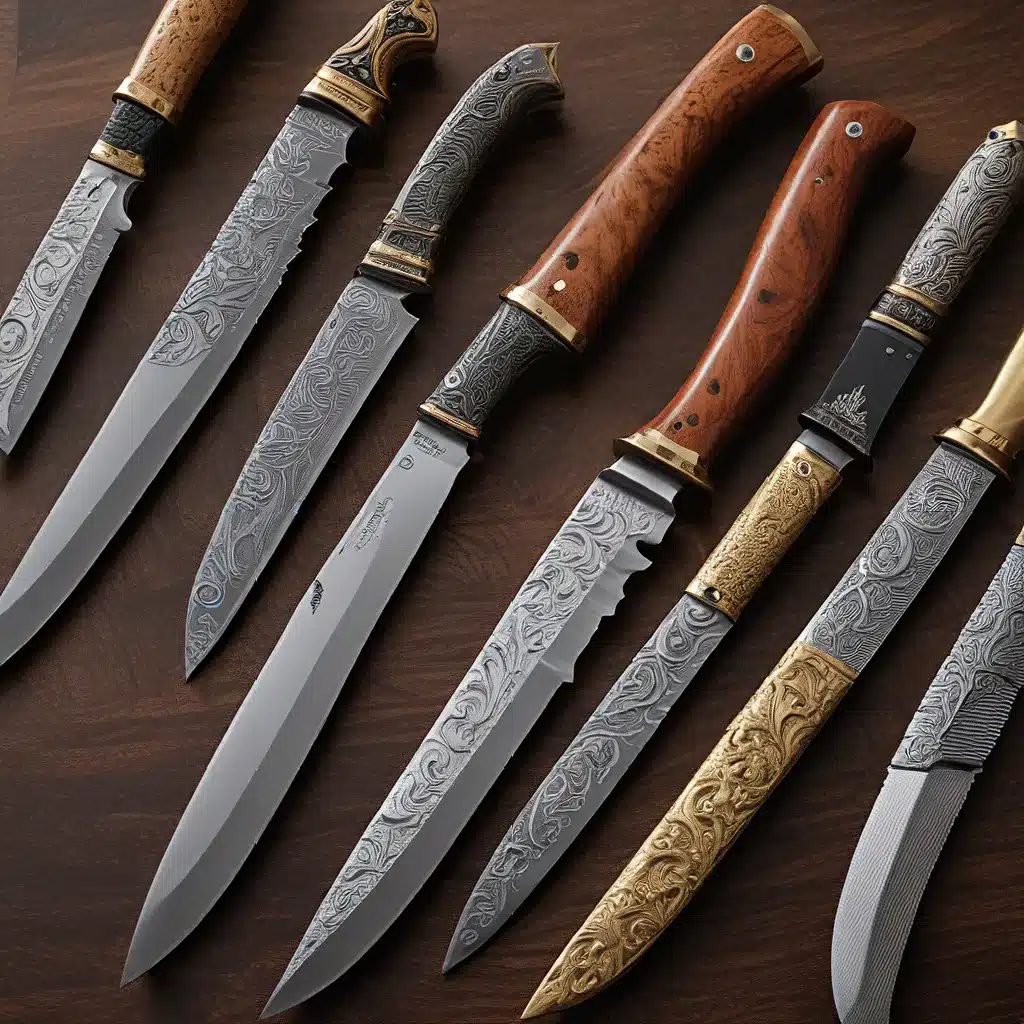
As a self-professed knife enthusiast, I’ve always been fascinated by the intricate world of collectible knives. These aren’t just utilitarian tools – they’re works of art, forged with precision, passion, and a deep reverence for tradition. Recently, I had the opportunity to delve into the captivating realm of Japanese sushi knives, and let me tell you, the experience was nothing short of revelatory.
Dissecting the Anatomy of a Masterpiece
To fully appreciate the technical brilliance of these knives, we need to start by understanding their anatomy. Japanese sushi knives are typically forged using high-quality steel that is renowned for its exceptional sharpness, durability, and edge retention. The steel can vary, with popular options including VG-10, AUS-8, and Shirogami steel. These materials are carefully selected to ensure the knife’s performance meets the exacting standards of sushi chefs.
But the blade is just the beginning. The handle of a Japanese sushi knife is also a work of art, meticulously crafted to provide a comfortable and secure grip. Common handle materials include wood, composite materials, and even bamboo, each offering a unique combination of aesthetics and functionality.
The Diverse Repertoire of Japanese Sushi Knives
Japanese sushi knives come in a variety of types, each tailored to a specific task in the art of sushi preparation. Let’s explore some of the most popular:
The Yanagiba Knife: With its long, slender blade and single-bevel design, the yanagiba is the epitome of precision slicing. It’s primarily used for cutting sashimi, allowing chefs to create thin, uniform slices with ease.
The Deba Knife: Characterized by its thick, robust blade, the deba knife is the go-to tool for butchering fish and performing other heavy-duty cutting tasks. Its strength and durability make it indispensable in the world of sushi preparation.
The Usuba Knife: Featuring a thin, flat blade, the usuba is the perfect companion for vegetable work in sushi preparation. Its sharp edge and precise cuts ensure the integrity of delicate vegetables, adding elegance and visual appeal to sushi presentations.
Each of these knives is a testament to the Japanese culinary tradition, and their versatility extends far beyond sushi. Many home cooks and professional chefs alike have discovered the joy of incorporating these masterpieces into their everyday culinary routines.
The Artistry of Knife Craftsmanship
Japanese sushi knives are not just tools – they are works of art, the products of a centuries-old tradition of craftsmanship. The process of creating these knives involves a fusion of traditional techniques and modern innovation.
The forging process, known as “honyaki” or “kasumi,” is a meticulous endeavor that involves heating and shaping the raw steel, followed by a tempering process that ensures the blade’s hardness, flexibility, and resilience. This attention to detail is what gives these knives their exceptional performance and longevity.
But the craftsmanship doesn’t stop there. The honing and sharpening of a Japanese sushi knife require the utmost skill and precision. Experienced craftsmen use water stones or whetstones to refine the blade’s edge, achieving a razor-sharp finish that is crucial for the delicate art of sushi preparation.
In recent years, some manufacturers have even incorporated modern materials and technologies to enhance the performance and durability of their knives. For example, the incorporation of powdered steel can help achieve an optimal balance of sharpness and strength.
Caring for Your Collectible Blades
Owning a Japanese sushi knife is a privilege, and with that privilege comes the responsibility of proper care and maintenance. Neglecting these knives can lead to a loss of their exceptional cutting performance and, in some cases, even compromise your safety.
Here are some essential guidelines to keep your knives in pristine condition:
-
Handwashing: Always wash your Japanese sushi knives by hand using warm water and a mild dishwashing detergent. Avoid the dishwasher at all costs, as the high heat and harsh chemicals can damage the blade.
-
Drying: Gently dry the blades immediately after washing to prevent moisture-related issues and maintain their sharpness.
-
Honing and Sharpening: Regular honing and sharpening sessions are essential to maintain the edge of your Japanese sushi knives. Use a honing rod to realign the blade, and a sharpening stone to restore its razor-sharp edge.
-
Storage: Store your Japanese sushi knives in a knife block, knife roll, or a wooden saya sheath to protect the blades from damage and ensure your safety when handling them. Avoid storing them in drawers or with other utensils, as this can lead to nicks and dulling.
By following these guidelines, you can ensure that your collectible knives remain in pristine condition, ready to elevate your culinary experiences for years to come.
Expanding Your Horizons
While Japanese sushi knives are specifically designed for sushi and sashimi preparation, their exceptional cutting performance makes them versatile tools suitable for various culinary tasks. Many home cooks and professional chefs have discovered the joy of incorporating these masterpieces into their everyday routines, from slicing fresh vegetables to deftly carving roasts.
Interestingly, some manufacturers even offer left-handed versions of their Japanese sushi knives, featuring a mirrored blade and a handle designed to accommodate the grip of left-handed users. This attention to detail is a testament to the commitment of these brands to ensure that every knife enthusiast can experience the joy of precision cutting.
As I continue my journey of exploring the world of collectible knives, I’m constantly in awe of the level of craftsmanship and attention to detail that goes into these masterpieces. Whether you’re a seasoned sushi chef or a home cook looking to elevate your culinary game, I highly recommend exploring the world of Japanese sushi knives. Prepare to be captivated by the blade brilliance and unlock a new level of culinary precision.

